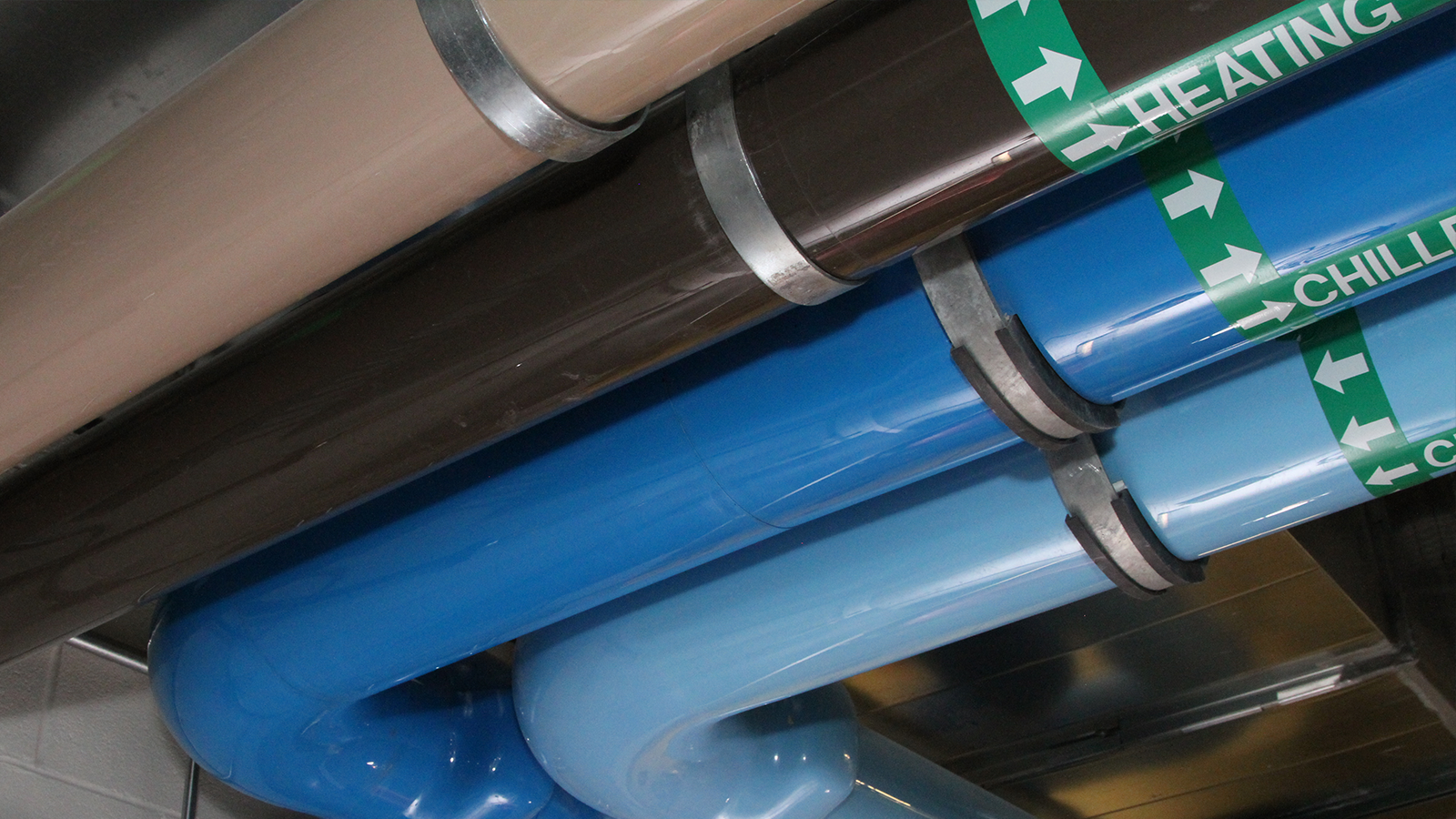Chilled water insulation systems have challenged system designers for years, and justifiably so. The temperature delta between the indoor chilled water system and ambient air creates an environment where condensation is likely to form, especially if the chilled water system is located in a high humidity environment.
While some condensation may not seem like an enormous problem, condensation as a whole is something that insulation system designers should seek to avoid. Condensation on pipes can lead to a number of complications, ranging from mold growth on the pipes and in the surrounding areas to creating safety hazards simply by dripping water on the floor. Moisture can cause substantial damage to the pipe insulation as well as the insulated pipes. Mold growth caused by moisture can be extremely costly to correct and potentially hazardous to building occupants if it goes unchecked. Additionally, in applications where the insulation is left exposed, water stains on the jacketing can damage the appearance of the insulation system.
In order to avoid condensation, system designers must do two things:
1) Ensure the system has enough insulation to keep the surface temperature of the insulation above the dew point. If insulation is not thick enough to avoid the dew point at its surface, condensation will form on the surface of the insulation. Condensation on the insulation surface introduces the opportunity for mold growth on or in the insulation, and if that condensation penetrates into the insulation itself, it makes the insulation more thermally conductive. This further decreases the efficacy of the insulation system, potentially creating a cycle of inefficiency and condensation.
2) Specify a low-permeance vapor retarder to disrupt vapor drive through the insulation. A vapor retarder is a jacketing that is applied to the outside of the insulation system. Typically, vapor retarders are applied to the insulation at the manufacturing facility (for fiberglass) or the fabrication facility, or in the field (for closed cell foam, like polyisocyanurate). Vapor retarder performance is measured in perms. A lower perm value indicates better water vapor resistance. A vapor retarder with a perm rating of 0.0 perms would provide undetectable moisture drive when tested. In chilled water applications, the vapor retarder should have a perm rating of < 0.02 perms.
Like transfer of thermal energy, in which high temperature will “travel” toward low temperatures, moisture vapor in conditions with high water vapor pressure will travel toward conditions having low water vapor pressure. This is known as vapor drive, and, in an insulation system without a low-perm vapor retarder, it can travel into the insulation, making it less thermally efficient. The decrease in the insulation’s thermal efficiency has the potential to cause the surface temperature of the insulation to drop below the dew point, creating an environment where condensation may form on the insulation surface. Vapor drive is influenced most significantly by humidity and temperature, and it is why chilled water systems, even closed-cell insulation systems, should utilize a low-perm vapor retarder.
When considering vapor retarders, there are several options available that suit the requirements of a chilled water insulation system, including:
· All service jackets (ASJ)
· Polypropylene coated ASJ jackets that offer superior moisture resistance (like the jacket on Micro-Lok® Ultra)
· Polyvinylchloride (PVDC) jacket, like Saranex® CX
While this list isn’t exhaustive, each of these vapor retarders has a perm rating of <0.02 or less and will serve in a variety of chilled water applications. However, before selecting a vapor retarder, system designers should consider the unique requirements of their application. If the application is likely to undergo abuse, a vapor retarder with higher puncture resistance, like Saranex CX or the Micro-Lok Ultra jacketing may be better choices than a standard ASJ. Likewise, any of these jackets could be covered with PVC or metal jacketing to protect the jacket from external damage.
With all vapor retarders, it is critical to seal all seams with a matching vapor-retarder tape (each of the vapor retarders specifically mentioned above is offered with a matching tape) and ensure the vapor retarder jacket doesn’t have any punctures or tears in it. If the jacketing system is improperly sealed or it has punctures/tears in it, the system is not considered “sealed” and vapor drive can occur, leading to condensation – even if there is sufficient insulation thickness to otherwise prevent it.
To learn more about the unique performance characteristics of each of these vapor retarders and how to successfully design a chilled water insulation system, watch our on-demand Insulation Intel® webinar, Insulating Chilled Water Systems.

